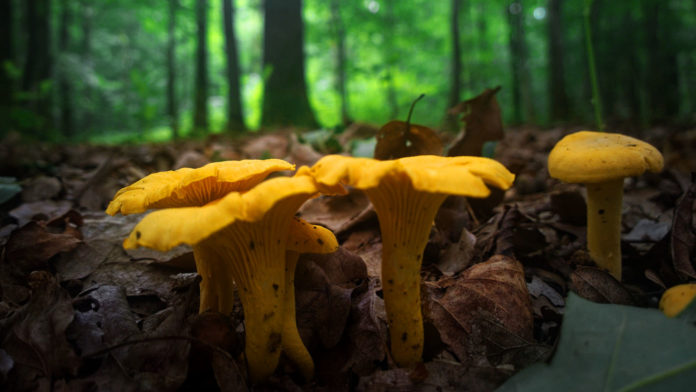When many people think about the forest, they think about the trees. Others might think about the wildlife. But few would think about what is living mainly underground.
Western University mycologist Greg Thorn believes that the real main character is the fungi, without which nothing living above ground would be possible. They decompose and recycle nutrients, and most of the fungus actually lives underground and delivers nutrients directly to nearby trees.
They play a critical role in supporting plant life, and integrating them into reforestation and agriculture plans may help build more complete and sustainable ecosystems. Thorn’s graduate students Katarina Kukolj and Alicia Banwell have been digging into it by studying fungi in the forests of Newfoundland.
Mushrooms as an alternative to chemical pesticides
Kukolj is working to understand blewit mushrooms, which spring up in circular patterns called fairy rings. But the mushrooms we see are only the temporary fruit of the fungus, and the core of root-like structures called mycelia that make up most of its mass lives underground.
“The blewit mushrooms we’re studying are just so big, and so heavy,” said Kukolj in a press release.
“This is surprising because they grow in harsh conditions that seem to be nutrient poor where there is little soil and mostly coarse sand and peat. As a result, we’re thinking that the blewits are consuming bacteria and maybe even other organisms. So the question is, what’s in the soil? And that’s exactly what I’m studying.”
Comparing the soils in places where blewits naturally grow, to ones where blewits have been introduced, to ones where there are none at all, Kukolj is extracting DNA for sequencing so that she can identify what else lives in the soil.
If they are indeed eating bacteria, not only are they decomposing them into useful nutrients, but they may also play a protective role for surrounding plants by taking care of microbes that might harm them. Because blewits are edible, they could be grown as a co-crop as a type of biopesticide. They would be a non-toxic and environmentally-friendly alternative to chemical pesticides.
Reforestation relies on fungi
When areas are deforested, new trees are often planted to help the forest regenerate. But seedlings grown in nurseries only seem to get colonized with a handful of fungi, where trees in the wild enjoy much more diverse fungal networks.
The fuzzy mat of underground connections is made of ectomycorrhizal fungi. Because it is so critical to providing nutrients in poor soil conditions that often come with deforestation, Banwell wants to understand how they evolve.
“There are fungal spores everywhere. Every tree seedling in the nursery has the same few fungi colonizing their root systems,” added Banwell.
“I want to know how it works when these are introduced into natural spaces. Do the ectomycorrhizal fungi of the nursery-grown tree seedlings affect the ectomycorrhizal fungi that are in the forest, including the edible chanterelles? Do they replace the ectomycorrhizal fungi of the forest? Or do the ectomycorrhizal fungi of the forest replace them?”
Her work could help shape reforestation practices, as successfully rebuilding the ecosystem requires fungal biodiversity.
Fungi may not be the first thing most people think of when they picture a forest, but without them it would be impossible for plant life to thrive. What happens in the soil sets up the whole story, and paying attention to that part of the narrative keeps the plot moving.








































